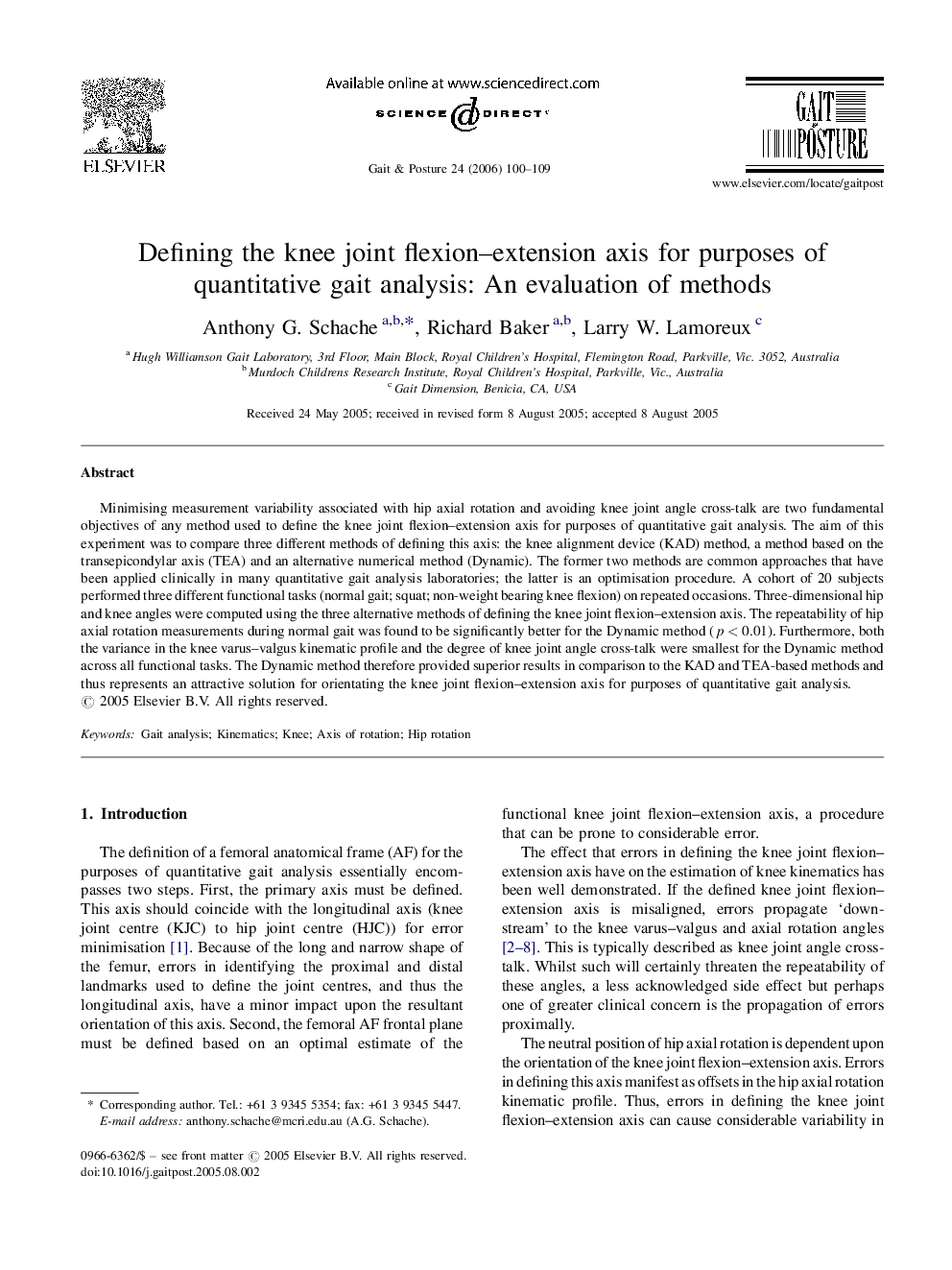| Article ID | Journal | Published Year | Pages | File Type |
|---|---|---|---|---|
| 4058704 | Gait & Posture | 2006 | 10 Pages |
Minimising measurement variability associated with hip axial rotation and avoiding knee joint angle cross-talk are two fundamental objectives of any method used to define the knee joint flexion–extension axis for purposes of quantitative gait analysis. The aim of this experiment was to compare three different methods of defining this axis: the knee alignment device (KAD) method, a method based on the transepicondylar axis (TEA) and an alternative numerical method (Dynamic). The former two methods are common approaches that have been applied clinically in many quantitative gait analysis laboratories; the latter is an optimisation procedure. A cohort of 20 subjects performed three different functional tasks (normal gait; squat; non-weight bearing knee flexion) on repeated occasions. Three-dimensional hip and knee angles were computed using the three alternative methods of defining the knee joint flexion–extension axis. The repeatability of hip axial rotation measurements during normal gait was found to be significantly better for the Dynamic method (p < 0.01). Furthermore, both the variance in the knee varus–valgus kinematic profile and the degree of knee joint angle cross-talk were smallest for the Dynamic method across all functional tasks. The Dynamic method therefore provided superior results in comparison to the KAD and TEA-based methods and thus represents an attractive solution for orientating the knee joint flexion–extension axis for purposes of quantitative gait analysis.
